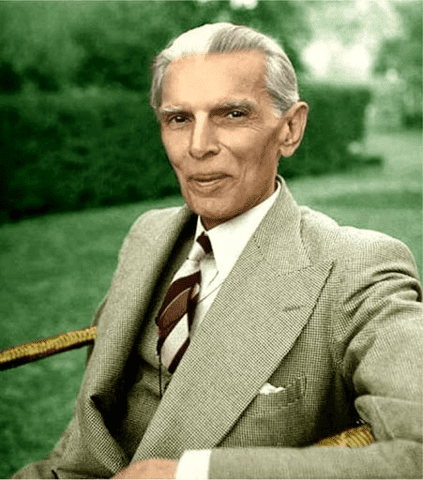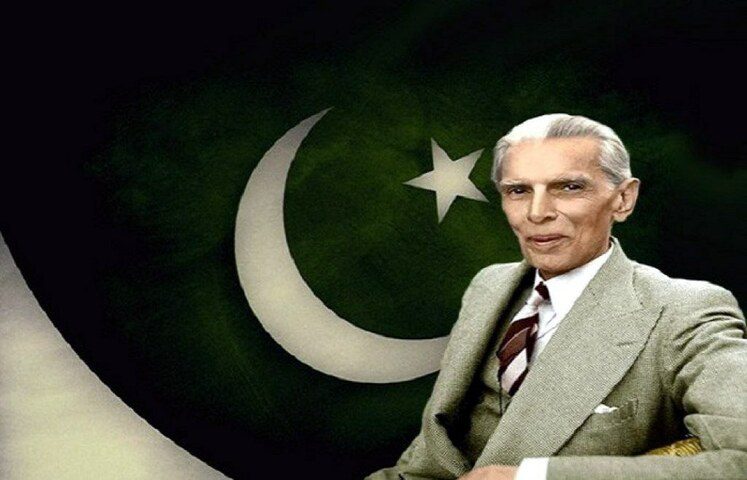
The story of the birth of Pakistan is a story of indefatigable struggle of the Muslims of the Sub-Continent culminating in the emergence of an independent sovereign state. It was a real mass movement galvanized by the dynamic leadership of Quaid-e-Azam Mohammad Ali Jinnah, who with his impeccable character, dauntless courage and determination and complete faith in the righteousness of the cause, inspired every Muslim to sacrifice every thing at the altar of freedom.
Quaid-e-Azam Mohammad Ali Jinnah was born at Karachi on 25th December, 1876. He received his primary education at Sind Madressatul Islam. In 1891, he joined the Christian Missionary Society High School, Karachi. At the age of 15 years, he was married to Miss Emibai. As he was ordained to shape the destiny of the Muslims of the Sub-continent, the Quaid-e-Azam from his childhood showed a great sense of responsibility. He studied very late at night and believed that no one can achieve anything in life, without hard work. This habit of working hard remained an article of faith with him during his most eventful life and was instrumental in his glorious achievement of Pakistan.
On the advice of Mr. Fredrick Leigh Croft, a friend of his father, Mr. Jinnah went to England for higher studies in 1893. There he joined Lincoln’s Inn in 1894 and passed the law examination in a record period of two years. The reasons as to why he studied at Lincoln’s Inn was given by the Quaid-e-Azam when he was addressing the Bar Association, Karachi in 1947. He had said that he joined Lincoln’s Inn because there on the main entrance, the name of the Prophet was included in the list of the great law givers of the world.
Quaid-e-Azam returned to Karachi in 1896, only to find his family in great financial distress. With bitter memories of the loss of his mother, his wife Emibai and business failures, he decided to move to Bombay to work for his future. The first few years were of real great hardship. But he never lost hopes and faced the situation with forbearance. His magnetic personality and sober temperament soon won him many friends. Mr. Join Malesworth Macpherson, the then acting Advocate General of Bombay, who was very much impressed with his professional ability and integrity, invited him to work with him; a rare distinction for a native Barrister in those days. Sir Charles Ollivant offered him a job for Rs. 1500/-a month, but Quaid-e-Azam declined it, saying that he would soon be able to earn that much in a single day. Many anecdotes are related of the days of his flourishing practice.
In 1918, he was married to a Parsi Lady Ratanbai. He had one daughter Dina from this marriage. Ratanbai died in 1929.
Quaid-e-Azam took keen interest in politics. He had an abhorrence for violence and anticonstitutional measures as a means to achieve the political objectives. He first associated himself with Congress and tried for sometime to bring the Congress and Muslim League to a common platform. He was the chief architect of the historic Lucknow Pact which was signed by Congress and Muslim League in 1916. But the subsequent events convinced him of the treacherous intentions of the Congress Leaders. In order to safeguard the Muslim interests, he joined hands with the Muslim League in its struggle against the British and Hindus. In the historic session at Lahore on 23rd March, 1940, held under his chairmanship, the famous Pakistan Resolution was unanimously adopted. The struggle for Pakistan was carried on under the leadership of Quaid-e-Azam and was crowned with success on 14th August, 1947. Unfortunately, the infant State of Pakistan was soon deprived of his loving care, due to his death on 11th September, 1948. The Quaid’s name will, however, continue to live for ever. The motto of unity, faith and discipline given to us by him will continue to serve as a beacon of light and guide us towards the path of progress and prosperity.
In order to introduce the more informal aspect of Quaid-e-Azam’s personality, the Executive Committee of the National Committee for the Birth Centenary Celebrations decided to organise an exhibition of personal belongings of Quaid-e-Azam. The task was assigned to the Department of Archaeology which is the custodian of the Quaid-e-Azam’s relics and the articles presented to him by the prominent Muslim leaders, political bodies and individuals. These relics, it is hoped, will also show how deeply the Muslims of various regions of the subcontinent loved and respected Quaid-e-Azam and how profoundly they were involved in the struggle for Independence.
The relics of Quaid-e-Azam include a variety of objects such as robes, dresses, foot-wear, carpets, crockery, cutlery, sport gears, articles of stationery, furniture etc.
It is generally believed that Quaid-e-Azam started wearing National dress only after being elected as President of the All India Muslim League in 1934. But a China silk Sherwani, on display in the exhibition, which was tailored by Hoar and Co., Bombay in 1925 belies this belief. Besides, his famous chocolate colour Sherwani, which he put on several historic occasions is also on display. The suits included in the exhibition were tailored by M/s Lesley and Roberts, London in 1934-35. A number of pairs of footwear is on display in the exhibition. A black pump shoe ‘gurgabi’ is among his footwears. These shoes were worn by the Quaid-e-Azam on important ceremonial occasions such as oath taking ceremony as Governor-General or attending the Constituent Assembly of Pakistan. Included in the exhibition is his well-known Butler shoe. The collection of carpets is excellent. The carpets are in traditional floral motifs and are of Persian origin. Two letter-heads one bearing the initial of Quaid-e-Azam and other bearing his Bombay address are among the exhibits.
It is generally believed that Quaid-i-Azam played only cricket and billiard. A set of golf clubs found in his relics are included in the exhibition. These are being displayed for the first time and thus it has been an addition to our knowledge that Quaid also played Golf.
The presentations made to Quaid-i-Azam include welcome addresses, poems of eulogy, maps of Pakistan, paintings etc. etc. The earliest address of welcome in this collection is of 1938 presented to the Quaid-i-Azam by the Larkana Municipality. The last welcome address is the one presented by the citizens of East Pakistan on his first visit to that part of the country, after the birth of Pakistan. Among the paintings, mention is made of oil paintings of Quaid-i-Azam by K.B. Shaikb, S. Tajamul Hussain and J. Hartley. A number of maps of Indo-Pakistan subcontinent carved out in silver, stone, embroidered cloth is on display. The earliest of these maps is the one presented to Quaid-i-Azam by a Muslim Merchant of Benaras in 1942.
The official badge of the Muslim League, which adorned the collars of the members of the Council of the All India Muslim League in the 27th Annual Session at Lahore, is one of the cherished exhibits. An insignia of the Muslim League and its badge in imitation silver is also on display. A number of swords was also presented to Quaid-i-Azam. Worth mentioning is a sword presented to him by the Baluchistan Muslim League on 4th July, 1943. The sword, it was stated, had been wielded in several battles in defence of Islam. The Quaid.i-Azam while accepting the valuable present had said that the sword would rise only in defence. Some 60 photographic enlargements give a pictorial story of the eventful life of the Father of the Nation. Besides, photo copies of several letters written to Quaid-i-Azam by prominent political leaders, patriots, students etc. are also on display.
Two important letters written to Quaid-i-Azam
by Mr. Zulfiqar Ali Bhutto, Prime Minister of Pakistan, in 1945 and 1948 when he was a student also form part of the exhibition. The first letter is dated 26th April, 1945. The letter demonstrates his unflinching faith in Pakistan as the ultimate goal of the Muslims of the sub-continent and his deep reverance for the Father of the Nation. The second letter which is dated 11th September 1948, was written to Mr. M.A.H. Ispahani, formerly Pakistan Ambassador in U.S.A., on the sad demise of Quaid-i-Azam
Expressing his grief, Mr. Bhutto had said that we must remember and bear in mind that though Quaid was no longer with us, yet his pure and virgin spirit will remain forever fertile in our mind.
SH.KHURSHID HASAN AND MIRZA MAHMUD BAIG
RELICS OF QUAID-E-AZAM


